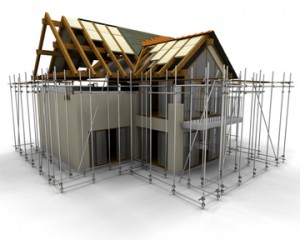For many years I have been worried about how space travel will affect microbiomes – of the space vehicles and of the residents (people, other animals, plants, etc). This is one of the reasons we started Project MERCCURI and get involved in looking at the microbes on the International Space Station. It is also why …
We publish a newsletter every month here at microBEnet. And I thought it would be good to also publish to the blog the various summaries and roundups from the newsletter. Past newsletters are archived here. Here are some of the highlights from this latest newsletter. MicroBEnet Blogs A summary of the recent topics posted on microBE.net …
This is just a quick post to introduce some early work products resulting from a really exciting project my team has been working on: the Open Source Building Science Sensors (OSBSS) Project (funded by the Sloan Foundation). The goal of OSBSS is to to design and develop a network of inexpensive, open source devices based on …
There was a very interesting artilce in the New York Times on August 21 bu Michael Kimmelman: In Redesigned Room, Hospital Patients May Feel Better Already. The article focuses on a move by the University Medical Center of Princeton to redesign hospital rooms. And Kimmelman discusses a variety of issues associated with hospital design. And there were …
Well, here is another benefit of automated Google Scholar searches. I think it is unlikely I would have found these new papers without such searches but these are fascinating and directly relevant to many aspects of work we are doing on Project MERCCURI. A series of papers on microbial ecolog and space travel in the …
We are organizing a workshop to catalyze the study of the microbiology of built environments where animals live. The workshop is scheduled for October 7th and 8th at UC Davis. Our aim is to bring together experts in animal health, building science and microbiology to discuss why these systems are worthy of study and how research in this …
While recent studies of the microbiology of the built environment (MoBE) have greatly increased our understanding of microbial community structure and composition on surfaces and in air within the spaces in which we live and work, most have been driven and led primarily by microbiologists with the building science community playing a supporting role. Perhaps as …
Alex Pasternack at Vice.com’s Motherboard channel has some very interesting thoughts on domes. Giant, massive, city-bestriding domes, starting with the Great Stink Dome of Hangzhou, which was erected to contain vapors emanating from the site of a former insecticide factory. Pasternack’s article discusses some of the fascinating history related to the idea of dropping domes …
Every time you bend over the public water fountain to take a drink and see the gunk at the bottom, do you wonder what’s living in it? Microbiologists do… This 2013 study from Finland collaborated on a study examining biofilms on the drinking water distribution system in office buildings. They started sampling right as the …
“Susceptibility of green and conventional building materials to microbial growth” Indoor Air journal, accepted for publication Abstract Green building materials are becoming more popular. However, little is known about their ability to support or limit microbial growth. The growth of fungi was evaluated on five building materials. Two green, two conventional building materials and wood …
